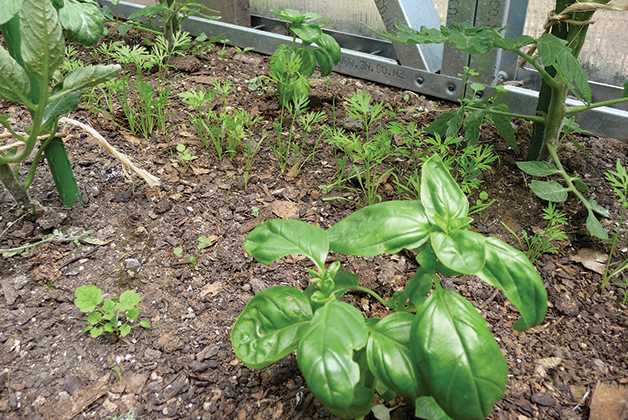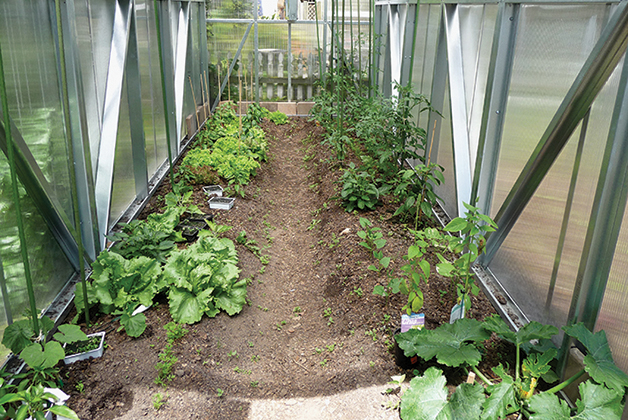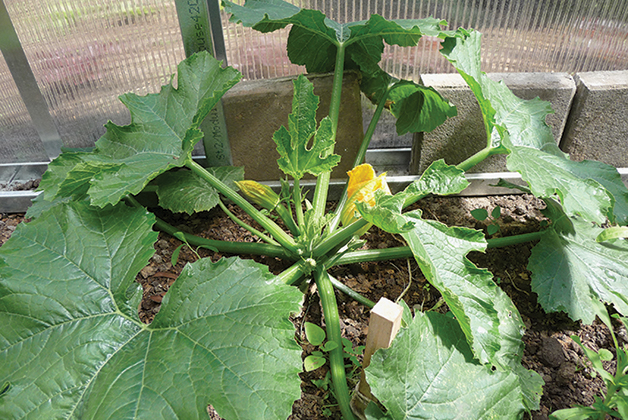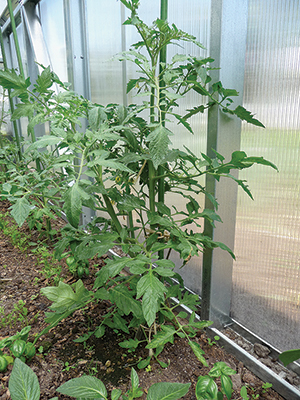Hei Mahi MāraToxic Spring
Oct 10, 2014

A beginner’s guide to growing organic vegetables
nā Tremane Barr

I believe all regional councils should come clean and tell the public what they do know about Hazardous Activities and Industries List (HAIL) properties in all regions, even if the information they have is imperfect.
The news in May of this year that the soil around our house was toxic with high lead levels necessitated the need for further testing of our vegetable garden area, which takes up about one-third of our quarter acre section. Not that we were alone, as 11,000 property owners in Canterbury were served notice by Environment Canterbury (ECan) that their properties may be contaminated with toxic material. For our testing we were lucky enough to be offered a charitable reduced rate by Geoscience Consulting and Hill Laboratories after they saw the story on Campbell Live.
Geoscience Consulting undertook extensive testing of the soil in our garden area using a hand-held XRF machine, which uses x-rays to provide instant feedback on the heavy metal content in soils. The XRF showed us straight away that we also have a problem with toxic amounts of lead in our garden. There is a margin of error with the XRF, and to correct this, four soil samples were taken which also allowed for testing of any chemical residues. We were also concerned about the extent to which the vegetables might take up any of the heavy metals in the soil, so had samples of carrot, silver beet, and celery tested as well.
A month later our worst fears were confirmed. The combined soil tests showed that overall lead levels were at 224 mg/kg compared to the acceptable residential limit of 210 mg/kg in soil (organic certifier BioGro has a limit of 100mg/kg). The residential limit is based on the assumption that only 10 per cent of one’s vegetable intake would come from a contaminated area like this, and yet our consumption rate was closer to 95 per cent for most of the past 20 years. The testing of the silver beet, carrot, and celery plant material also showed that these plants had taken up dangerously high levels of lead, cadmium and copper. These vegetable test results contradict information given to the public by ECan and the Ministry for the Environment which states that so long as you thoroughly wash vegetables grown on contaminated ground, they should be safe for eating. These test results prove that it is not safe to eat vegetables grown on land that is high in heavy metal levels.

This rather shook me, as all the literature I had read to that point conveyed the idea that the use of compost and lime over time would dilute and inhibit the uptake of heavy metals by vegetable plants. This is clearly not the case. Over 20 years I had put on copious amounts of dolomite lime and organic compost which by my rough estimate would be at least one metre high of compost if it had been put on the garden all at once. Yet still the garden soil and vegetables contain toxic amounts of heavy metals. Indeed I have now found out that the very leafy green vegetables I have been relying on to help me overcome pancreatic cancer are the ones most prone to uptake heavy metals, e.g. silver beet, kale, spinach, lettuce, and broccoli. This latest news is very disturbing for me because there is a known connection between cancer and heavy metals, and specifically a higher risk of pancreatic cancer with higher levels of lead and cadmium.

I believe all regional councils should come clean and tell the public what they do know about Hazardous Activities and Industries List (HAIL) properties in all regions, even if the information they have is imperfect. ECan did not identify my property as a HAIL site. It was only due to geotech testing for the rebuild of my house that toxic levels of lead in the soil were identified. If one has any doubts as to the potential for previous toxic activity on one’s property, I can only recommend that for peace of mind it is better to have your soil tested, rather than have regrets later on. For example, a neighbour had her children’s blood tested for lead and the youngest was well over the limit for lead poisoning. This resulted in the children being banned from having contact with the soil on their property, e.g. playing outside like young kids do. When they were re-tested a couple of months later virtually no lead was found in the youngest child’s blood. This will hopefully mean there will be no future negative health consequences for the children, now that they know to avoid this soil.
Vegetable Heavy Metal Test Results
These heavy metal results are well over the MfE tolerable daily intake.
| Heavy metals in vegetables, mg/kg | Carrots | Silver beet | Celery | MfE tolerable daily intake, mg/kg bw/day |
|---|---|---|---|---|
| Lead | 0.066 | 0.097 | 0.043 | 0.0019 |
| Cadmium | 0.0041 | 0.0151 | 0.011 | 0.00083 |
| Copper | 0.21 | 0.79 | 0.27 | 0.15 |
 It looks like we are going to have to bite the bullet and pay (through the nose) to have our garden soil removed and replaced with new clean soil. The whole process is estimated to cost around $30,000–$40,000. By the time the bureaucracy to do this is dealt with, I probably won’t be able to use the old vegetable garden area before early 2015 – just in time to get in the crops for winter. The good news is that we will end up with a property that will be a virtual blank slate, which will allow me and my wife to start again with a whole new (easy-care) garden design. In the meantime I was just going to put grass on the newly remediated land close to the house which the insurance company has taken responsibility for, but I have decided instead to have the tunnel house moved onto this fresh new soil and will focus on growing tomatoes, cucumbers, capsicums and spring lettuces in it. Beside the tunnel house I will also pilfer some more of the (future) lawn and have a small lettuce garden – just enough so we can still have some fresh summer salads. Next year I will move the tunnel house back and start anew with establishing a new patch of lawn. If there is one thing the recovery from the earthquake disasters has taught me, it is the need to be flexible and to make the best of your opportunities while you can.
It looks like we are going to have to bite the bullet and pay (through the nose) to have our garden soil removed and replaced with new clean soil. The whole process is estimated to cost around $30,000–$40,000. By the time the bureaucracy to do this is dealt with, I probably won’t be able to use the old vegetable garden area before early 2015 – just in time to get in the crops for winter. The good news is that we will end up with a property that will be a virtual blank slate, which will allow me and my wife to start again with a whole new (easy-care) garden design. In the meantime I was just going to put grass on the newly remediated land close to the house which the insurance company has taken responsibility for, but I have decided instead to have the tunnel house moved onto this fresh new soil and will focus on growing tomatoes, cucumbers, capsicums and spring lettuces in it. Beside the tunnel house I will also pilfer some more of the (future) lawn and have a small lettuce garden – just enough so we can still have some fresh summer salads. Next year I will move the tunnel house back and start anew with establishing a new patch of lawn. If there is one thing the recovery from the earthquake disasters has taught me, it is the need to be flexible and to make the best of your opportunities while you can.
Websites
www.nzgeoscience.co.nz
www.hill-laboratories.com
www.llur.ecan.govt.nz
www.mfe.govt.nz/issues/managing-environmental-risks/contaminated-land/is-land-contaminated/hail.html
Tremane Barr is Ngāi Tahu/Kāti Māhaki ki Makaawhio. He has been gardening organically for more than 20 years. He currently works for Toitū Te Kāinga as the research leader for the He Whenua Whakatipu project, which is helping to develop the Ngāi Tahu Mahinga Kai brand system.